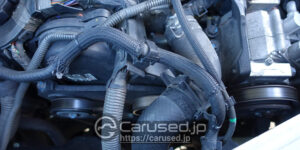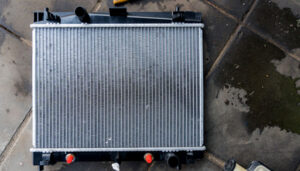If you’ve ever dealt with a dead battery at an inconvenient time, you’ve probably considered getting a trickle charger. You’ve heard about it in the past, but you’ve wondered if it actually makes a difference. Well, it can be a smart investment, especially when you are considering an alternative power source for your vehicle’s battery.
What is a Trickle Charger?
Technically, the term ‘trickle charger’ simply refers to a device that allows you to charge at low amperage. It is worth noting that your alternator constantly charges your car’s battery. That said, you may not necessarily operate your car every day. In this case, you will need a trickle charger.
When you store your vehicle, you can connect the charger and expect a steady stream of power. This way, the energy won’t be drained even if you rarely use the vehicle. Moreover, you won’t have to deal with a dead battery at the most unexpected and inconvenient time.
How to Use a Trickle Charger
Step 1: Prepare the Battery for Charging
Keep in mind that excess hydrogen may become concentrated in an enclosed space, causing an explosion or fire. So, make sure that the vehicle is parked in a covered yet well-ventilated area. Also, turn off the ignition and remove the key.
Step 2: Choose a Suitable Ground Location
The next step is to select a good location for attaching the negative terminal of your trickle charger. Look for a large bolt connected to the engine block or chassis. On the other hand, you can also find a section of the frame that is free of excessive grime, dirt and oil. Keep in mind that you should never use the negative terminal of the battery. Otherwise, you might cause an explosion or fire.
Step 3: Attach the Cables
Now, take the red alligator clip and attach it to the positive terminal of the battery. Once you’ve ensured a secure connection, attach the black, negative wire to your chosen ground location from Step 2. Avoid touching the wires while the charger is connected and turned on. Otherwise, you might suffer from serious shock or injury.
If you want to get an illustrative guide on using a trickle charger, you can watch this video:
Step 4: Switch the Charger On
After connecting the cables, refer to your battery’s manual to know the proper settings for the charger. Now, plug n your charger and switch it on.
Step 5: Check the Display
Finally, you need to check the display to ensure that the device is charging properly. Many battery chargers contain an amp meter that will read lower to 0 on an adequately charged one, and higher on a dead battery. Keep the battery connected until the charging is complete. Here’s a good video showing how to check the trickle charger gauge:
If you are using a conditioning trickle charger, there is no need to disconnect the battery. However, if you should unplug the battery if you are using a full-power charger.
It is important to check the meter to see if the battery is charging properly. If the meter reads low, it is likely that your battery does not need a charge, or that your ground connection is not secure. When this happens, you need to switch off the charger, disconnect it, then plug it back.
If the charger does not begin to charge even after a few minutes, then it means that your battery is dead beyond recovery. To ensure that your trickle charger is working, you can also try using it n a different battery. If there is any movement in the ammeter needle from zero, then it means that the charger is functioning. Consequently, the issue lies on your battery. In this case, you can always learn how to know if your battery is dead.
![You are currently viewing [Updated 2019]Trickle Charger: What Is It and How Do You Use It?](https://carused.jp/blog/wp-content/uploads/2017/12/car-battery.jpg)



Can I trickle charge a battery when it’s not connected to a vehicle?
yes
I am testing my 24v trickle charger – when connected to batteries reads 28.7, when testing batteries only reading 28.0, is this working correctly
Can I leave the battery connected when tricle charger is connected
Yes. You can use a trickle charger (around 1 amp) to charge any lead acid battery regardless if it has removable caps or is sealed.
Some articles state to connect the ground lead to some part of the vehicle ground system and not the battery. This is true IF the battery is still in the vehicle. This can help eliminate arcing and sparking.
Some articles don’t tell you that it’s okay to connect the negative lead straight to the battery if indeed the battery is not in a vehicle.
I’m charging my electric gate battery right now. Took it out and it’s in the garage.
I always wipe it clean too because there are usually trace voltage losses through dirt and grime over any lead acid battery. It ain’t much but if you don’t use the battery very often it could be a factor.
When I connect the charger to my car it flashes red-not charging. Why would it not charge??
What does “well ventilated area mean? If the car that needs the trickle charge is in and enclosed 2 car garage with doors down, will that be an issue? Any thoughts on how long it takes for the gasses to accumulate? if doors were opened every 2 weeks would that work?
Due to the very cold temperature, i mounted my trickle charger to my wife’s car permanently, it is connected to the battery all the time, all she need to do is plug it when at work. My concern is, the green light (green light to indicate its maintaining the battery) on the trickled charger stays lit, can this discharged the battery when not plugged?
Help….please!! Trying to get my head around electrics for my Citroën berlingo which I want to convert to a dinky camper!
I require a leisure battery mainly as I need to use medical equipment at night (cpap dreamstation). Looking at AGM deep cycle leisure batteries 110ah+ as can get better capacity (potentially 80% DoD) and are faster to recharge!
Already have an inverter 300w (600w surge) and will need the kit to connect the battery to the car battery which is a wet lead acid!
Firstly… Is connecting AGM to lead acid ok and secondly what other kit would I need…. Trickle charge, relay, isolator…. What what what?
Perminant headache with this research so any help would be appreciated.
Many thanks
Kt
Just purchased 2 6v&12v 1.5 amp beltek trickle automatic battery/maintainer. Will be gone for 5 months and want to use on our 2005 Lincoln car and electric club golf cart (has 6 batteries). Please help with installation and I’m worried about overcharging.
Hi there, the trickle charger should be fine for the car battery, ie 12volt.
Unfortunately the golf buggy as you say has 6 batteries which probably is 6 at 6volts each totalling 36 volts. Therefore your trickle charger would not be sufficient.
You would need a charger specifically designed for the buggy.
Cheers Malc
Hi. I have a 110 ah battery with a converter connected. Wondered if I could connect a trickle charger with the converter still connected and in use? It is being used on a tricycle powering two soup urns upto 1500w. Any help would be great. Cheers
I have a solar trickle charger that’s meant to be plugged into a lighter outlet. When I connect it to a 2015 Mazda6, I get an alert to “turn power off.” And I can’t lock the door. Any help would be greatly appreciated.